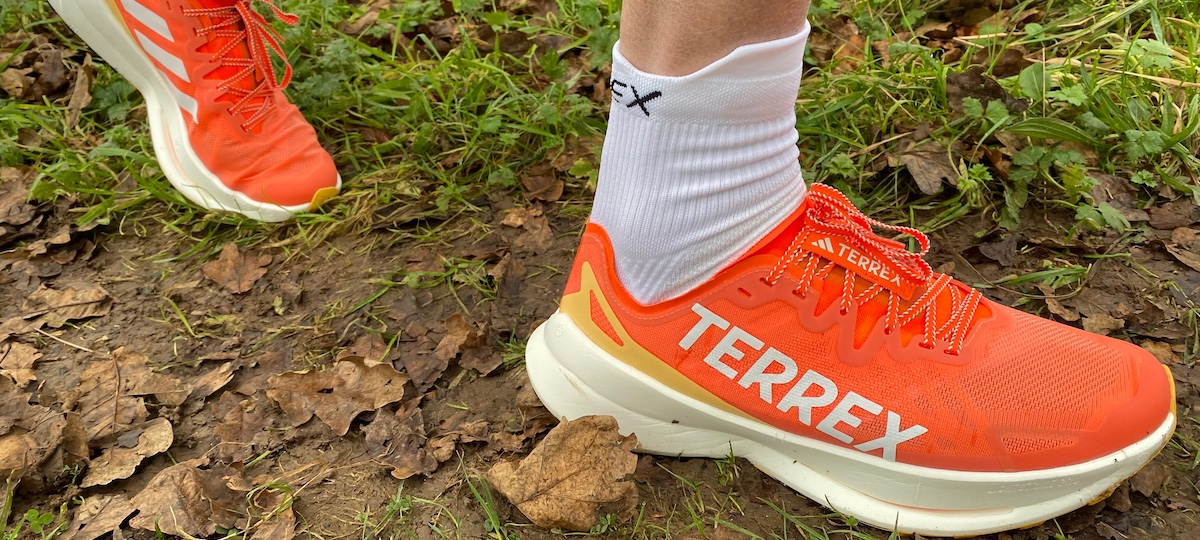
Adidas Terrex Agravic Speed Ultra running shoes: first impressions
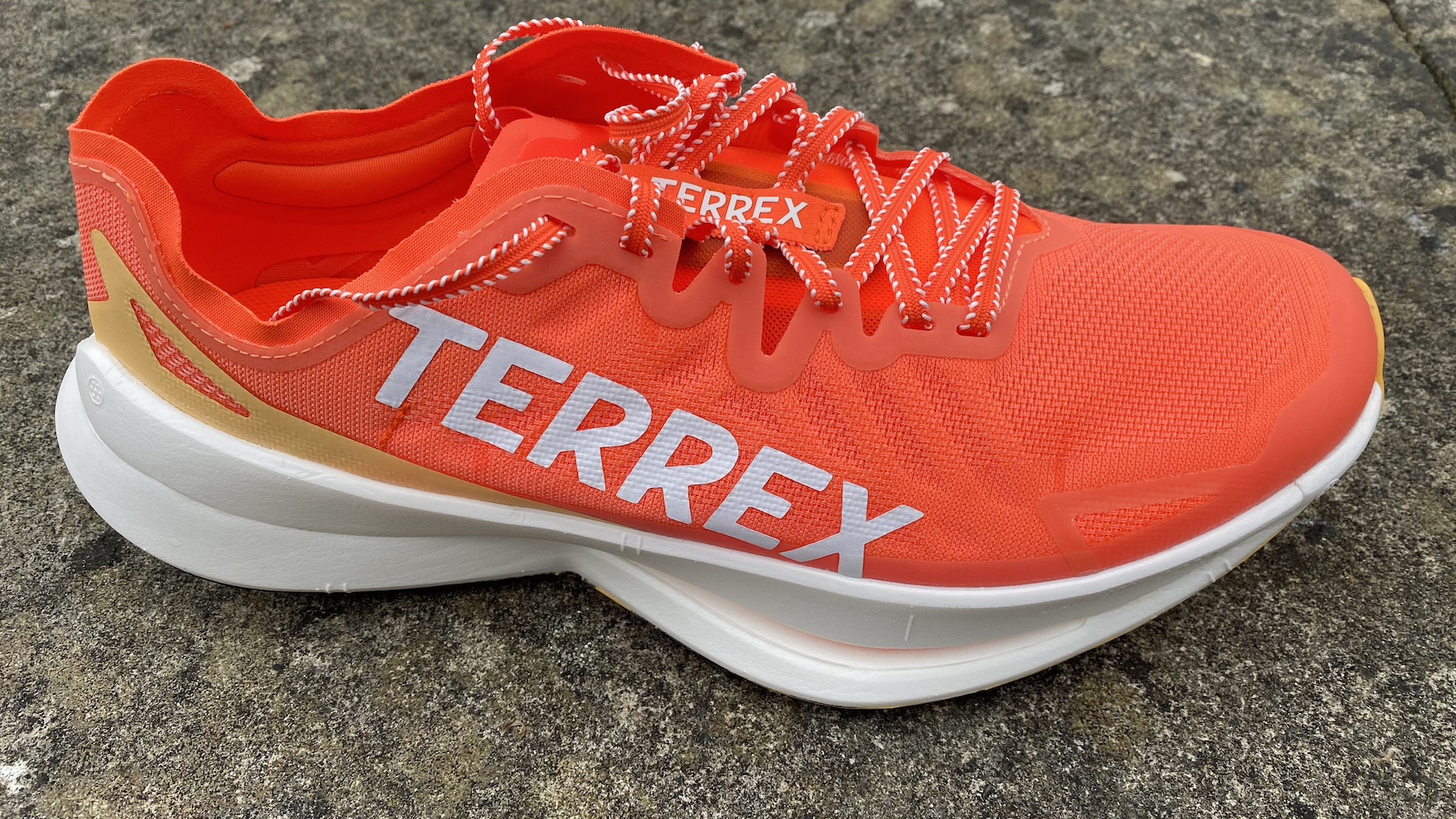
A sub-brand of German sporting-gear giant Adidas, Terrex specializes in producing apparel for the outdoors. These sleek shoes are aimed at trail runners doing any sort of distance, up to and including ultra marathons. The marketing push around the Agravic Speed Ultras (and the very name of the shoe) indicates that the intended use is on longer distances, but the design is firmly oriented towards those at the pointier end of the field, rather than the majority of participants in such events (the mid-pack and slower runners).
• List price: $220 (US) / £200 (UK)
• Weight (per shoe, men’s size 11): 322g / 11.4oz
• Drop: Midsole drop: 8mm (heel: 42mm / forefoot: 34mm)
• Materials: Synthetic upper, Lightstrike Pro cushioned midsole, Continental Rubber outsole
• Colors: Impact Orange, Crystal White & Semi Spark / Lucid Lemon, Core Black & Dash Gray
• Compatibility: Ultra running, all-distance trail running on hard and rocky terrain, and some road running
Everything from the low weight and minimalist materials used in these shoes, through to the Lightstrike Pro cushioning in the midsole and the aggressive rocker, screams ‘go faster’ – which is fine for elite runners, but in all honesty is terrible advice for most people attempting to get through a 50km-plus event, for whom simply finishing is a monumental achievement, and a podium place lies well north of impossible. (And, for the record, I very much count myself in this latter group.) For us, pacing oneself – and actually walking for large sections, when necessary – is key to not DNFing when taking on an ultra.
Of course there are people out there who can run really quite fast for epic distances, and more power to them – the Agravic Speed Ultras (one of a generation of supershoes that some elite runners are embracing warmly) are possibly perfect for such athletes. Case in point: David Roche recently smashed the Leadville 100 course record wearing these exact shoes, and credited his footwear as playing a big part in his victory. However, we’re not all David Roches, and I think most people would be better off wearing something that’s more supportive and substantial when running very long races, instead of a shoe that urges you to hurry up all the time.
But I’m not saying you should disregard these shoes altogether if you’re not a top-end runner; I just think you should ignore the name and consider them for much shorter-distance trail runs and events, where they will suit far more people. With this in mind, I’ve been trail testing the Terrex Agravic Speed Ultras to see how they compare with the best trail running shoes on the market.
Adidas Terrex Agravic Speed Ultra running shoes: design and materials
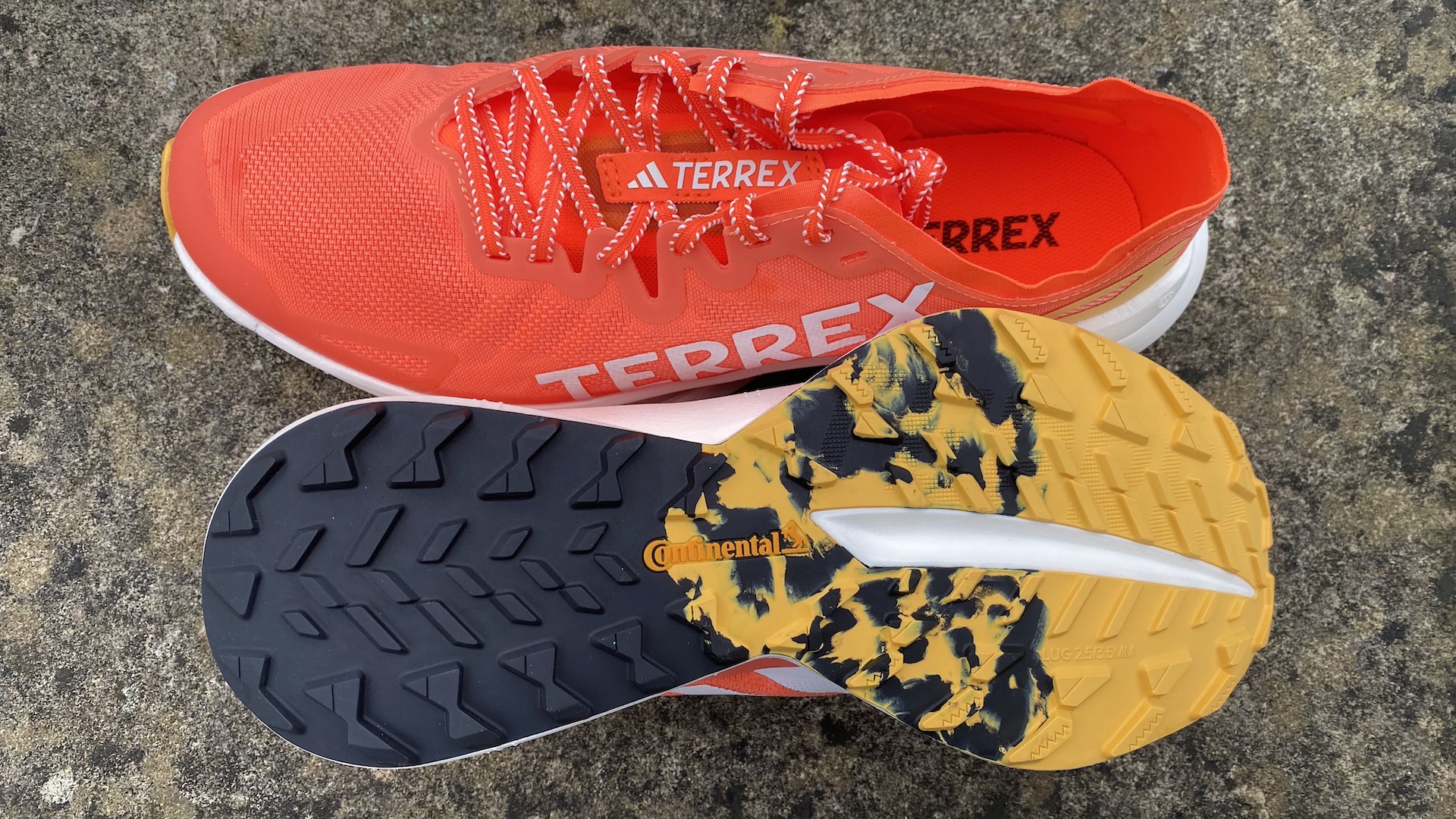
Agravic means to be devoid of gravity, which is a lofty claim, but these shoes – while not weightless – are extremely light. The upper is made with thin synthetic fabrics, where a breathable and quick-draining mesh main material is combined with a more robust TPU layer around the lace eyelets, toecap and heel. The laces themselves are textured, to stop them coming undone mid run, while the tongue takes the form of an integrated semi-sock, which only extends about a third of the way along the foot.
The Agravic Speed Ultras have a surprisingly generous toebox (many performance-oriented running shoes are tight in this area) and quite a wide forefoot landing area. The Lightstrike Pro cushioned midsole provides plenty of bounce, especially above the ball of the foot as the rocker shape of the shoe propels you forward along the trails.
There’s an 8mm difference in the height of the heel and the height of the toe-end on these shoes, but of far more significance is the very pronounced rocker shape of the sole as it travels between these points. It’s a design intended to promote an efficient cadence where you push very positively off the front of the foot, whether you’re a natural forefoot runner or not. And beneath this boat-shaped shoe is a Continental rubber outsole with a range of 2.5mm and 3mm lugs.
Adidas Terrex Agravic Speed Ultra running shoes: on the trails
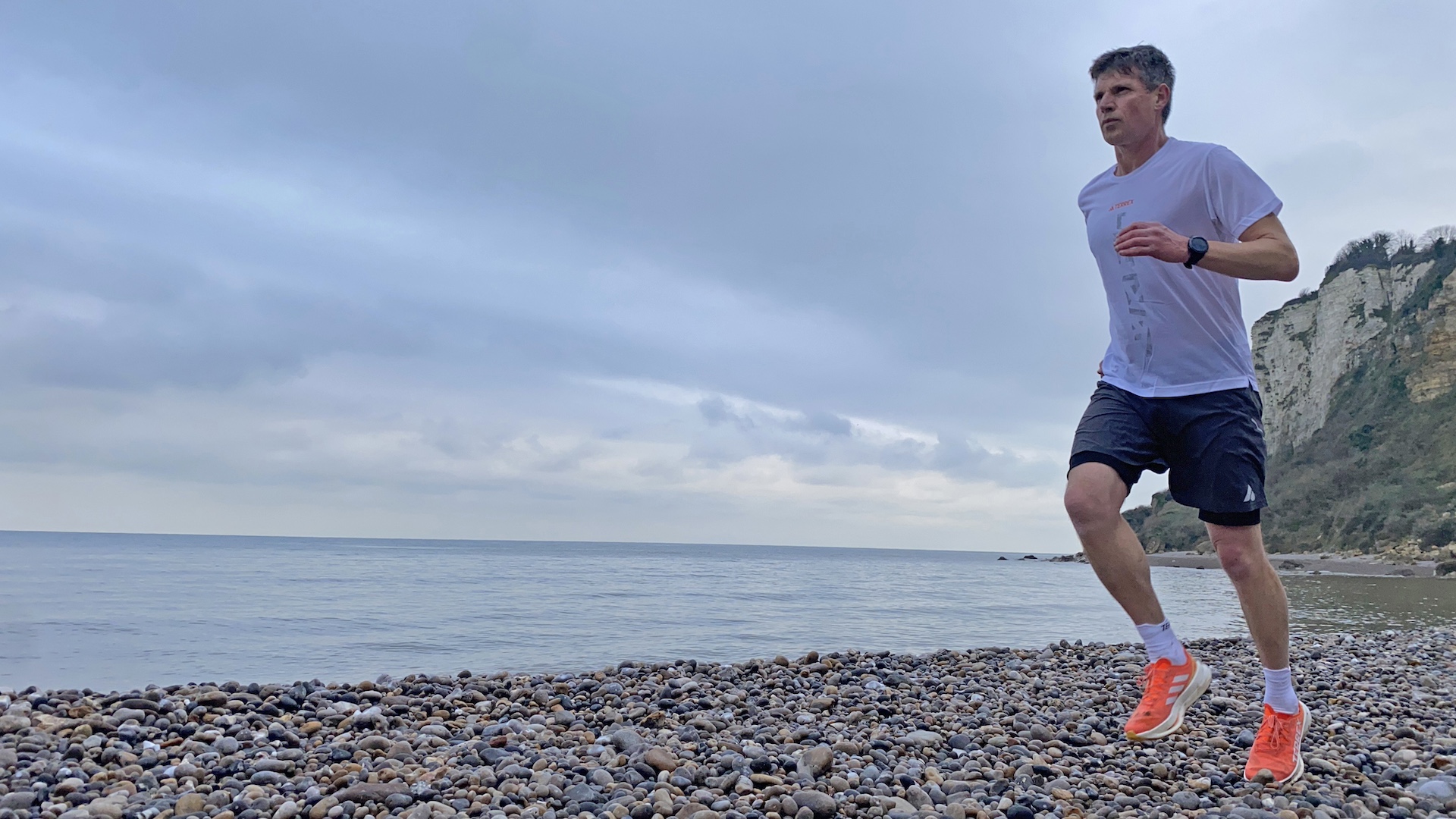
As noted, the Agravic Speed Ultra Lights are squarely aimed at top-end runners, looking to be competitive in races up to ultra marathon length. This is quite a small target audience, and a group I cannot claim to be part of, but I can see some benefits for those who do move much quicker than me over long off-road routes. These shoes are intelligently designed, with a very pronounced rocker that definitely promotes a very positive, fast-paced cadence. They’re extremely light, the material doesn’t take on any water during stream crossings and the shoes drain very quickly. The laces stay done up, and the dynamic midsole puts plenty of bounce into your bound.
But, while I do take part in the occasional ultra marathon distance race, these are not a shoe I would choose to wear for such distances. They don’t offer the amount of protection I’m looking for during events that might see me out in the wilds for hours on end, and they’re designed to encourage me to go faster than I reckon I should in order to get to the end.
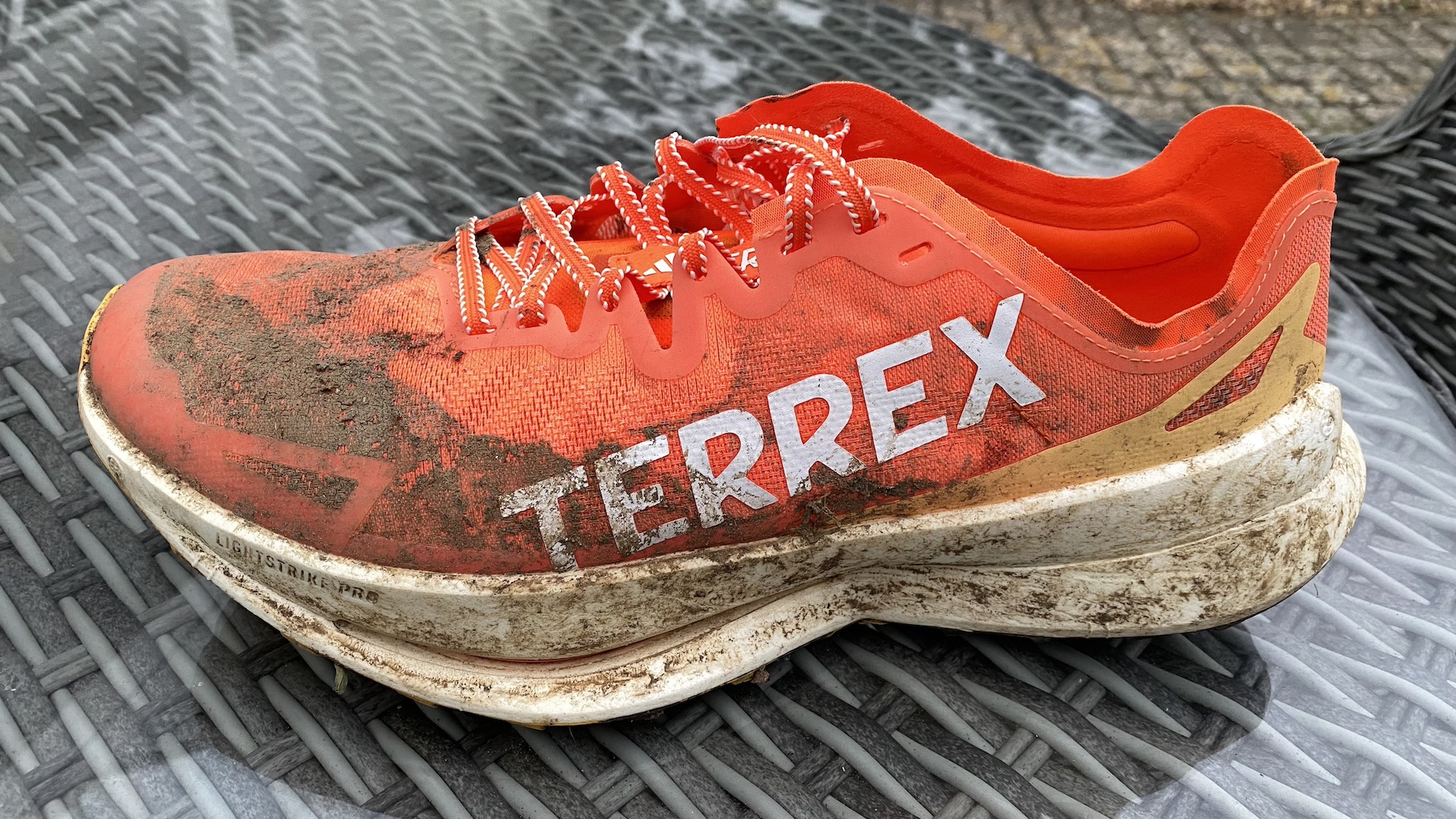
Instead, I’ve been trail-testing these shoes on much shorter distances, where I can happily cut loose and go a good bit quicker. The positives mentioned above all come in to play here too, and I’ve enjoyed some elements of this shoe. The rocker takes a bit of getting used to, and it actually caused me some discomfort at first, but the more runs I do in them, the more I appreciate the shape of this shoe and the cadence it encourages (which I can happily maintain over more modest distances).
However, I’ve been disappointed with several other aspects of the Agravic Speed Ultras. The lugs are small and while the grip is passable on rocks, it’s woeful on any kind of mud – I’ve been slipping all over the place on my local trails. And then, on drier terrain, I found grit, sand and small pebbles could enter the shoe because the inner sock doesn’t extend far enough. The textured laces, while good for staying tied once done up, make it hard to get a good tight fit around the foot.
Overall, while I like some elements of this shoe, the negatives are outweighing the positives, but then – as a plodder not a podium climber – I guess I’m not really the target market.







